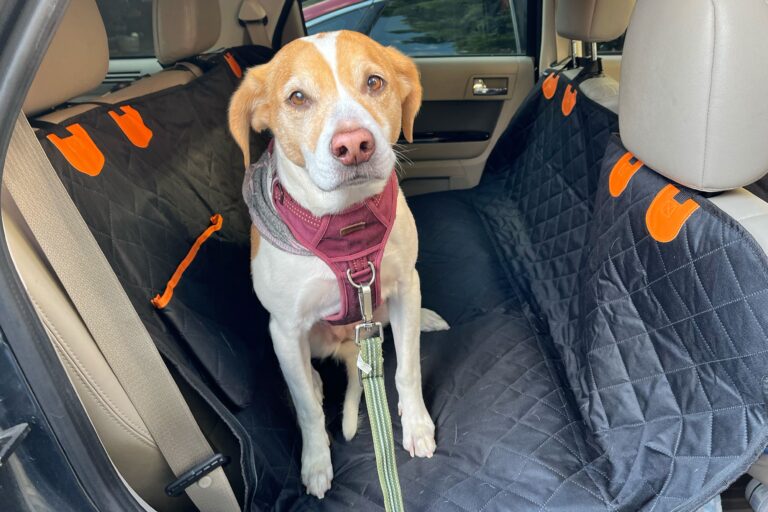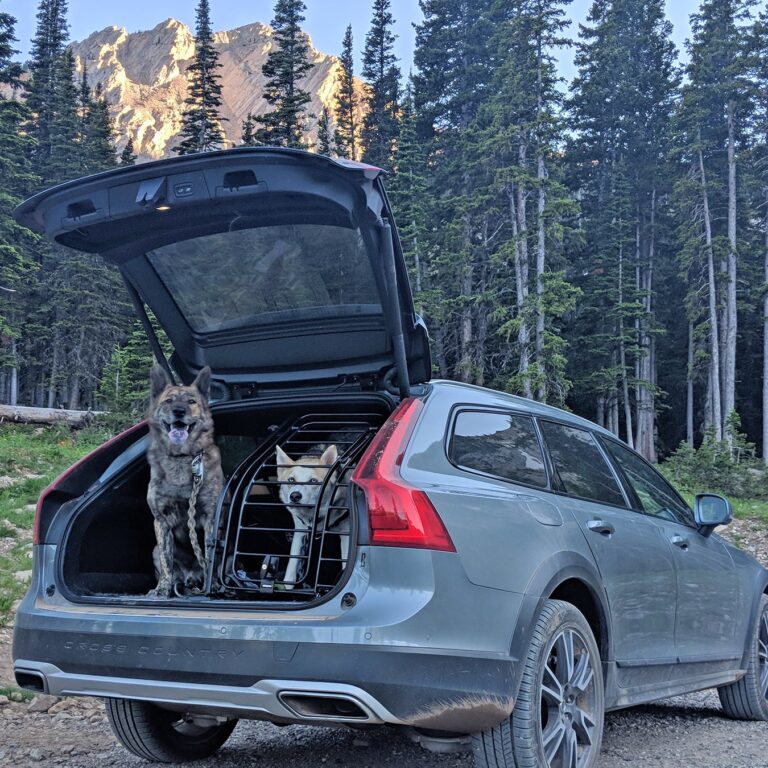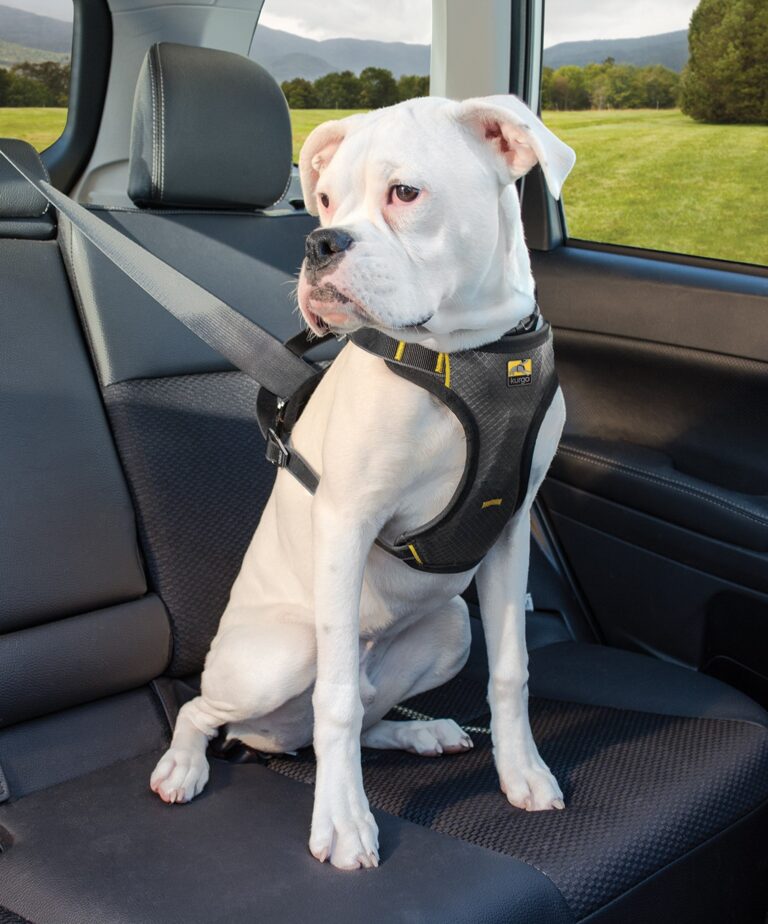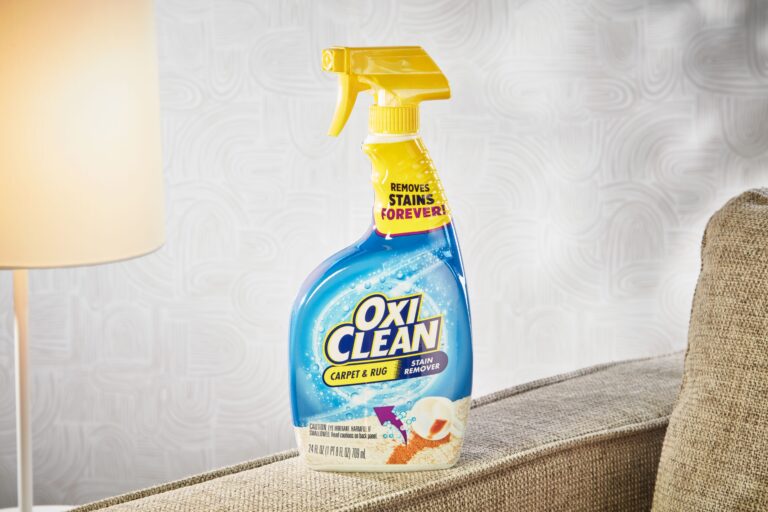What Type of Seat Belt is Best for Dogs?: Ultimate Guide
The best type of seat belt for dogs is a harness that attaches to the car’s seatbelt system. This ensures safety and comfort for your furry friend.
When traveling with your dog, it’s essential to prioritize their safety just as you would for any human passenger. A dog seat belt harness provides security and prevents distractions while driving. By restraining your pet in the car, you reduce the risk of injury to both your dog and yourself in case of sudden stops or accidents.
In this blog post, we will explore the importance of using a seat belt for dogs and provide insights on how to choose the best one for your canine companion.
Introduction To Canine Car Safety
Ensuring the safety of our furry friends during car journeys is of utmost importance. A crucial aspect of this is the use of appropriate seat belts for dogs to prevent injury and keep them secure. In this article, we will explore the importance of restraining pets, the common risks of unrestrained dogs in vehicles, and the best types of seat belts for dogs.
The Importance Of Restraining Pets
Using a seat belt for your dog is vital for their safety and that of the passengers in the vehicle. It prevents them from being a distraction to the driver and minimizes the risk of injury in the event of a sudden stop or accident.
Common Risks Of Unrestrained Dogs In Vehicles
Unrestrained dogs in vehicles are at risk of injury in the event of a collision or sudden stop. They may also pose a danger to the driver and passengers by causing distractions or interfering with the operation of the vehicle.
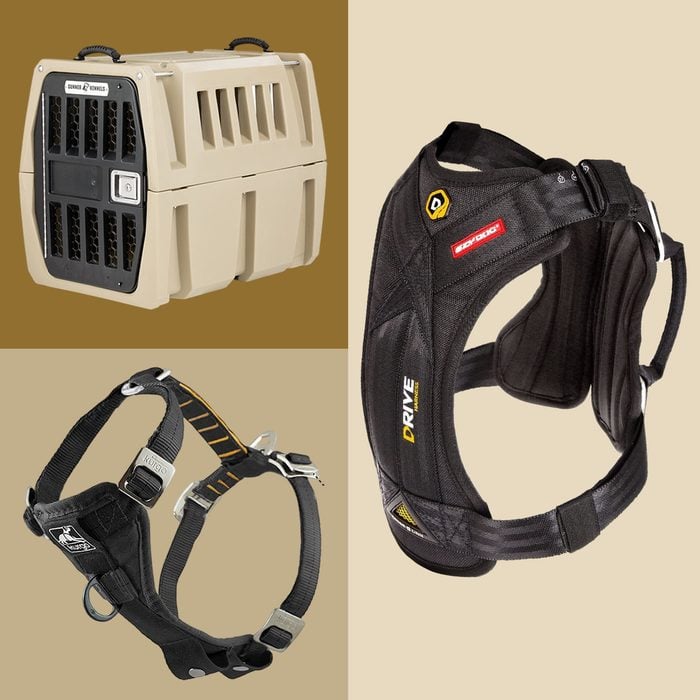
Credit: www.rd.com
Types Of Dog Seat Belts
Dog seat belts come in various types, each offering different levels of safety and comfort. From harnesses with adjustable straps to seat belt attachments that connect to your car’s existing buckle, finding the best type of seat belt for your dog depends on their size, temperament, and your personal preferences.
Stay informed to make the right choice for your furry friend’s safety on the road.
Harness Seat Belts
A harness seat belt is a popular option for securing your dog in the car. It is designed to fit around your dog’s chest and back, providing a secure and comfortable restraint. The harness distributes the force of sudden stops or impacts across your dog’s body, reducing the risk of injury.
Here are some key benefits of using a harness seat belt:
- Improved Safety: A harness seat belt keeps your dog securely in place, preventing them from roaming around or getting thrown during sudden movements.
- Comfortable Fit: The harness is adjustable to ensure a snug and comfortable fit for your furry friend.
- Reduced Risk of Choking: Unlike a collar, a harness seat belt doesn’t put pressure on your dog’s neck, reducing the risk of choking or injury.
- Easy to Attach: Most harness seat belts can be easily attached to your car’s existing seat belt system or secured using a carabiner.
Tether Seat Belts
Tether seat belts provide another option for restraining your dog in the car. These seat belts consist of a short leash or tether that attaches to your dog’s harness on one end and to the car’s seat belt system on the other end.
Consider the following advantages of using a tether seat belt:
- Flexibility: Tether seat belts allow your dog to move around slightly while still keeping them safely in place.
- Ease of Use: Attaching and detaching the tether seat belt is a quick and simple process, making it convenient for car rides.
- Cost-effective: Tether seat belts are often more affordable compared to other options, making them a budget-friendly choice.
Zip Line Seat Belts
Zip line seat belts offer a unique way to secure your dog in the car. They consist of a long leash that attaches to both sides of the car’s interior, creating a zipline-like setup for your dog to move back and forth.
Consider the following benefits of using a zip line seat belt:
- Freedom of Movement: Zip line seat belts provide your dog with more freedom to move around compared to other options.
- Secure Restraint: Despite the freedom, your dog remains securely attached to the zip line, preventing them from wandering too far.
- Easy Installation: Setting up a zip line seat belt is usually straightforward and can be done in a matter of minutes.
When choosing the right type of seat belt for your dog, consider their size, behavior, and comfort. Remember, the ultimate goal is to keep them safe and secure during car rides.
Key Features Of A Good Dog Seat Belt
For dogs, a good seat belt should have adjustable length, strong metal buckles, and be compatible with different car models. It should also be made of durable materials and have a comfortable harness for the dog. These features ensure safety and comfort during car rides for pets.
Adjustability For Comfort
Strength And Durability
Ease Of Use
Compatibility With Car Models
Key Features of a Good Dog Seat Belt A good dog seat belt should prioritize adjustability, ensuring comfort for dogs of all sizes. Strength and durability are crucial to keep your furry friend safe in case of sudden stops or accidents.Adjustability For Comfort
Dog seat belts with adjustable straps allow for a customized fit to keep your pet secure and comfortable during car rides. Ensure the belt can be easily adapted to accommodate your dog’s size and movement.Strength And Durability
Opt for a dog seat belt made from high-quality materials that can withstand the wear and tear of regular use. Look for features like reinforced stitching and sturdy hardware to ensure longevity.Ease Of Use
Choose a dog seat belt that is simple to attach and adjust, making it convenient for daily use. Quick-release buckles and intuitive design can save you time and effort when securing your pet in the car.Compatibility With Car Models
Ensure the dog seat belt is compatible with your specific car model to guarantee a secure fit. Some seat belts may require specific attachments or connectors for different vehicles, so check compatibility before purchasing.Safety Standards And Certifications
Discover the best type of seat belt for dogs that meets safety standards and certifications. Ensure your furry friend’s protection with crash-tested and adjustable seat belts designed for car travel. Keep your pup secure and comfortable on the road.
Crash-testing And Certifications
When it comes to choosing the best seat belt for your furry friend, it’s essential to consider safety standards and certifications. These ensure that the product you select has undergone rigorous testing and meets the necessary requirements for protecting your dog in case of an accident. Let’s explore the key aspects of safety standards and certifications that you should keep in mind.Crash-testing And Certifications
Crash-testing is a crucial part of determining the safety of a dog seat belt. It involves subjecting the product to simulated accident scenarios to evaluate its effectiveness in restraining and protecting your dog. Look for seat belts that have been crash-tested by reputable organizations such as the Center for Pet Safety (CPS) or the Federal Motor Vehicle Safety Standards (FMVSS). These organizations conduct thorough tests and provide certifications to products that meet their stringent safety standards.Material Standards
The material used in a dog seat belt plays a vital role in its overall safety and durability. Look for seat belts made from high-quality materials that are strong, yet comfortable for your dog to wear. Ideally, the seat belt should be constructed from durable nylon or polyester webbing that can withstand the forces exerted during an accident. Avoid seat belts made from flimsy materials that may break or tear upon impact.Design Safety
In addition to crash-testing and material standards, the design of the seat belt also plays a significant role in ensuring your dog’s safety. Look for seat belts that feature a secure and adjustable harness to keep your dog properly restrained. The harness should fit snugly around your dog’s body without causing discomfort. Additionally, consider seat belts with features such as a padded chest plate or shock-absorbing tether to provide additional protection and reduce the risk of injury. To summarize, when choosing a seat belt for your dog, prioritize safety standards and certifications. Look for products that have undergone crash-testing by reputable organizations and meet their stringent requirements. Ensure the seat belt is made from high-quality materials and features a secure and adjustable harness. By considering these factors, you can provide your furry friend with the best possible protection during car rides.Sizing And Fit: Ensuring Proper Restraint
For the best fit and safety, opt for a dog seat belt harness tailored to your pet’s size and weight. Ensure it’s adjustable and secure to keep your furry friend restrained during car rides. This type of seat belt offers the most protection and comfort for your dog.
Sizing and Fit: Ensuring Proper Restraint When it comes to keeping your furry friend safe while driving, choosing the right seat belt is crucial. One of the most important factors to consider is sizing and fit. Ensuring proper restraint is essential for your dog’s safety and comfort during car rides. In this section, we’ll discuss how to measure your dog for a seat belt, adjust for a secure fit, and recognize a poorly fitted seat belt. Measuring your dog for a seat belt To ensure a secure and comfortable fit, it’s essential to measure your dog correctly. Here are the steps to measure your dog for a seat belt: 1. Measure your dog’s girth: Use a soft measuring tape to measure the widest part of your dog’s ribcage, just behind their front legs. 2. Measure your dog’s neck: Use the same measuring tape to measure the circumference of your dog’s neck, just below their jawline. 3. Compare the measurements: Compare the two measurements to find the size that fits your dog best. Adjusting for a secure fit Once you have the right size, it’s essential to adjust the seat belt to ensure a secure fit. Here’s how to adjust the seat belt for a secure fit: 1. Adjust the length: Most seat belts have adjustable lengths. Adjust the length to fit snugly around your dog’s torso. 2. Check the placement: Make sure the seat belt is positioned correctly across your dog’s chest and not their neck. 3. Test the fit: Give the seat belt a gentle tug to ensure it’s secure. If it’s too loose, adjust the length. If it’s too tight, loosen the seat belt slightly. Recognizing a poorly fitted seat belt Recognizing a poorly fitted seat belt is essential to ensure your dog’s safety. Here are some signs of a poorly fitted seat belt: 1. The seat belt is too loose or too tight. 2. The seat belt is positioned around your dog’s neck instead of their chest. 3. Your dog is uncomfortable or restless. 4. Your dog can easily escape from the seat belt. Ensuring your dog’s safety and comfort during car rides is crucial. By measuring your dog for a seat belt, adjusting for a secure fit, and recognizing a poorly fitted seat belt, you can ensure your furry friend stays safe while enjoying the ride.:strip_icc()/best-dog-seat-belts-7969415-3ef761069ce64473bfa46aa8f2c7c193.jpg)
Credit: www.thesprucepets.com
Comfort Vs. Safety: Striking A Balance
When it comes to choosing the right seat belt for your furry friend, you must strike a balance between comfort and safety. While you want your dog to be comfortable during long car rides, it’s crucial to ensure their safety in case of an accident. In this article, we’ll discuss the different factors you should consider when choosing the best seat belt for your dog.
The Role Of Padding
Padding plays a crucial role in ensuring your dog’s comfort during car rides. A well-padded seat belt can help prevent discomfort and chafing, especially during long journeys. However, when it comes to safety, extra padding can be a hindrance. Thick padding can compress during an accident, causing your dog to shift or even fly out of their seat. Therefore, it’s essential to strike a balance between padding and safety.
Allowing Movement While Ensuring Safety
Another factor to consider when choosing a seat belt for your dog is movement. While you want your furry friend to be able to move around, it’s crucial to ensure their safety in case of an accident. A good seat belt should allow your dog to move their head and neck, but not their entire body. This will help prevent them from being thrown around in case of an accident.
Material Considerations For Comfort
The material of the seat belt is another essential factor to consider when choosing a seat belt for your dog. A good seat belt should be made of soft, durable material that won’t irritate your dog’s skin. Moreover, it should be breathable to prevent overheating during long car rides. While comfort is crucial, it’s essential to ensure that the material is strong enough to withstand the force of an accident.
Overall, when choosing a seat belt for your furry friend, it’s essential to consider both comfort and safety. A well-padded seat belt made of soft, durable material that allows for some movement while ensuring safety is the best option. By keeping these factors in mind, you can ensure that your furry friend is comfortable and safe during car rides.
Installation And Usage Tips
When it comes to the safety of our furry friends during car rides, choosing the right seat belt is crucial. Proper installation and usage play a vital role in ensuring the effectiveness of the seat belt for dogs. Here are some essential tips for installing, training, and maintaining your dog’s seat belt.
Step-by-step Installation Guide
Installing a seat belt for your dog is a straightforward process, but it’s essential to follow the manufacturer’s instructions carefully. Here’s a step-by-step guide to ensure proper installation:
- Choose a suitable seat belt that is compatible with your dog’s size and the specific vehicle.
- Attach the seat belt to your dog’s harness, not the collar, to prevent injury in case of sudden stops.
- Securely fasten the other end of the seat belt to the vehicle’s seat belt buckle or latch according to the provided instructions.
- Adjust the length of the seat belt to allow your dog to sit comfortably but restrict movement to ensure safety.
Training Your Dog To Wear A Seat Belt
Introducing your dog to wearing a seat belt may require patience and positive reinforcement. Here are some tips for training your dog to wear a seat belt:
- Gradually introduce the seat belt to your dog in a calm and positive environment, associating it with treats and praise.
- Start with short, low-stress car rides to help your dog acclimate to wearing the seat belt.
- Regularly practice securing the seat belt and rewarding your dog for calm and compliant behavior.
Maintaining And Cleaning Your Dog’s Seat Belt
Maintaining and cleaning your dog’s seat belt is essential for its longevity and functionality. Here are some tips for maintaining and cleaning the seat belt:
- Regularly inspect the seat belt for any signs of wear, such as fraying or weakened components, and replace as needed.
- Follow the manufacturer’s instructions for cleaning, which may involve hand-washing with mild detergent and air-drying.
- Store the seat belt in a safe place when not in use to prevent damage and degradation.
Top Picks And Recommendations
When it comes to the safety and comfort of your furry friend during car rides, choosing the right seat belt for dogs is crucial. To help you make an informed decision, we’ve compiled a list of top picks and recommendations based on budget-friendly options, premium seat belt models, and customer reviews and testimonials.
Budget-friendly Options
If you’re looking for an affordable yet reliable seat belt for your dog, consider the following options:
- Simple Pet Restraint: A basic, cost-effective option suitable for small to medium-sized dogs.
- Adjustable Seat Belt Harness: Offers versatility and safety without breaking the bank.
Premium Seat Belt Models
For pet owners who prioritize quality and advanced features, these premium seat belt models are worth considering:
- Crash-Tested Harness: Engineered to withstand impact and provide maximum protection for your dog.
- Integrated Shock Absorber: Offers enhanced comfort and security during car rides, ideal for larger breeds.
Customer Reviews And Testimonials
Don’t just take our word for it. Here’s what some pet owners have to say about their experience with these seat belt options:
- “I love the simplicity and peace of mind that the Simple Pet Restraint provides. It’s a great value for the price.” – Sarah J.
- “The crash-tested harness exceeded my expectations. My dog stays secure and comfortable on every trip.” – Michael R.
Legal Requirements And Recommendations
Discover the legal requirements and recommendations for securing your furry friend while driving. Opt for a crash-tested harness or a sturdy dog seat belt to ensure their safety on the road. It’s essential to choose the best type of seat belt for dogs to prevent accidents and keep them protected during car rides.
State Laws On Pet Restraints
When traveling with your furry friend, it’s essential to know the state laws on pet restraints. In some states, it’s mandatory to use a pet seat belt while driving with your dog in the car. For example, in New Jersey, it’s illegal to transport an unrestrained animal in a moving vehicle, and violators can face fines of up to $1,000. In Hawaii, it’s illegal to drive with a dog in your lap, and you can be fined up to $97.50 for violating the law.Insurance Implications Of Unrestrained Pets
Unrestrained pets in the car can be dangerous not only for your pet but also for you and other passengers in the car. In case of an accident, your unrestrained dog can become a projectile, injuring everyone in the car. Moreover, if your unrestrained dog causes an accident, your insurance company may deny your claim or even cancel your policy. Therefore, it’s crucial to use a pet seat belt to protect your pet and ensure that you’re covered by your insurance policy.Best Practices For Pet Restraints
While there are no federal laws regarding pet restraints, experts recommend using a pet seat belt to keep your dog safe and secure while driving. A pet seat belt is a harness that attaches to the car’s seat belt, keeping your dog in place during sudden stops or collisions. Make sure to choose a pet seat belt that fits your dog correctly and is comfortable for them to wear. Also, never attach the pet seat belt to your dog’s collar, as it can cause choking and severe injuries in case of an accident. In conclusion, when traveling with your furry friend, it’s essential to follow the state laws on pet restraints and use a pet seat belt to keep your dog safe and secure. Remember, an unrestrained dog can be dangerous not only for your pet but also for you and other passengers in the car, so it’s crucial to use a pet seat belt to protect everyone in the car.
Credit: www.motor1.com
Alternatives To Seat Belts
While seat belts are a popular choice for securing dogs in cars, they may not be the best option for every dog. Fortunately, there are several alternatives to seat belts that can help keep your furry friend safe and secure while traveling. Here are some of the most common alternatives to seat belts:
Dog Car Seats
Dog car seats are a great alternative to seat belts, especially for smaller dogs. These seats are designed to elevate your dog, giving them a better view of the road and helping to reduce motion sickness. They often come with built-in harnesses to keep your dog secure while you’re driving.
Travel Crates And Carriers
Travel crates and carriers are another popular option for securing dogs in cars. These options work well for dogs of all sizes, and can provide a safe and comfortable space for your dog to ride. Be sure to choose a crate or carrier that is appropriately sized for your dog, and that is securely fastened to the car.
Barriers And Dividers
Barriers and dividers are a good option if you have a larger vehicle, such as an SUV or a van. These products are designed to create a barrier between the front and back seats of your car, preventing your dog from jumping into the front seat while you’re driving. They can also be used to separate multiple dogs in the car.
When choosing an alternative to a seat belt, it’s important to consider your dog’s size, temperament, and comfort level. No matter which option you choose, be sure to secure your dog properly and provide plenty of water and breaks during long trips.
Traveling With Your Dog: Safety Checklist
Ensure your dog’s safety while traveling by choosing a crash-tested dog seat belt. Opt for a harness that attaches securely to the car’s seat belt system for maximum protection on the road.
When it comes to traveling with your furry friend, their safety should be your top priority. One essential aspect of ensuring their safety is choosing the right seat belt for dogs. Just like humans, dogs need to be secured while traveling in a vehicle to prevent injuries in case of sudden stops or accidents. In this article, we will guide you through a comprehensive safety checklist, covering pre-travel preparations, during the journey, and post-travel checks.
Pre-travel Preparation
Before hitting the road with your dog, it’s crucial to make necessary preparations to keep them safe and comfortable throughout the journey:
- Get your dog accustomed to wearing a seat belt or harness before the trip.
- Choose a seat belt or harness specifically designed for dogs, ensuring it is the right size and fits securely.
- Inspect the seat belt or harness for any signs of damage or wear and tear. Safety should never be compromised.
- Ensure your dog’s collar or harness has identification tags with your contact information, just in case they accidentally escape.
- Prepare a comfortable and familiar travel crate or carrier if your dog prefers it instead of a seat belt.
During The Journey
Once you’re on the road, here are some important measures to take to ensure your dog’s safety:
- Securely attach your dog’s seat belt or harness to the vehicle’s seat belt system.
- Keep your dog in the back seat to minimize distractions for the driver and reduce the risk of injury from airbags in case of an accident.
- Avoid letting your dog stick their head out of the window, as it poses a danger of debris or insects getting into their eyes or ears.
- Never leave your dog unattended in a parked vehicle, as it can quickly become dangerously hot or cold.
- Keep your dog hydrated by offering water during breaks, but avoid overfeeding them before or during the journey to prevent car sickness.
Post-travel Checks
After reaching your destination, it’s essential to ensure your dog is safe and sound:
- Inspect your dog’s seat belt or harness for any signs of damage caused by the journey.
- Check your dog for any injuries or discomfort, paying attention to their body language and behavior.
- If using a crate or carrier, ensure it is in good condition and clean.
- Give your dog some time to relax and recover from the journey before engaging in any strenuous activities.
- If you notice any concerns or unusual behavior, consult a veterinarian for further guidance.
By following this comprehensive safety checklist, you can ensure a safe and enjoyable journey for both you and your furry companion. Remember, a little preparation goes a long way in ensuring your dog’s well-being while traveling.
Conclusion: Making The Right Choice For Your Dog
Ensure your dog’s safety with a reliable seat belt option. Consider harness seat belts for secure travel. Prioritize your furry friend’s well-being on every car journey.
Balancing Safety, Comfort, And Budget
Safety should always be the top priority when choosing a seat belt for your dog. Consider the level of comfort it provides, balanced with your budget.
The Role Of Pet Owner Responsibility
Pet owners have the responsibility to ensure their dog’s safety by selecting a secure and comfortable seat belt.
Frequently Asked Questions
What Is The Best Kind Of Seat Belt For A Dog?
The best kind of seat belt for a dog is a harness specifically designed for car travel. It should be adjustable and comfortable for your dog to wear. Look for a seat belt that is crash-tested and approved for safety.
What Is The Safest Restraint For A Dog In A Car?
The safest restraint for a dog in a car is a crash-tested harness or a secured crate. This ensures the dog’s safety while traveling.
What To Look For In A Dog Seatbelt?
When choosing a dog seatbelt, look for durability, adjustable length, and secure attachments. Ensure it is crash-tested and approved by safety standards. The seatbelt should be comfortable for your dog and easy to use. Remember, safety is key when traveling with your furry friend.
Are Dog Seat Belts A Good Idea?
Yes, dog seat belts are a good idea for pet safety during car rides. They help prevent accidents and keep dogs secure.
Conclusion
Ultimately, choosing the best seat belt for your dog is crucial for their safety. With various options available, consider factors like size, comfort, and durability. Prioritize your furry friend’s well-being by investing in a reliable restraint system for stress-free travels.
Your pet’s safety matters most.
- Can I Get in a Taxi Without a Car Seat? - January 26, 2025
- Can I Get Chlamydia From a Toilet Seat? - January 26, 2025
- Can I Get an Uber With a Car Seat? - January 26, 2025

